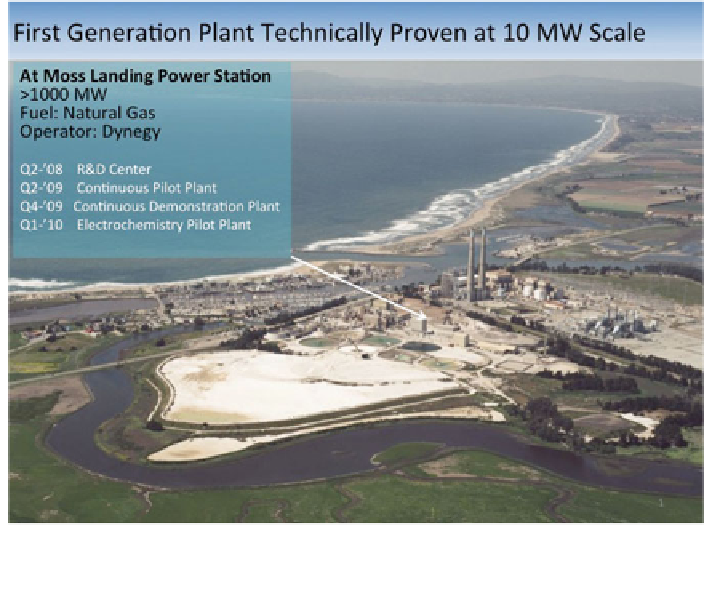Environmental Engineering Reference
In-Depth Information
Fig. 13.2 First Generation carbonate mineralization was demonstrated at a pilot and demon-
stration scale between 2008 and 2010 in Moss Landing, California, using flue gas from the Moss
Landing Power Station, the largest operating power plant on the west coats of the United States
13.3.2 Calcium Carbonate Cements
A diverse variety of calcium carbonate cements were tested in the 1990s and found to
have different properties, including very high strengths and rates of biological
incorporation (Constantz et al.
1998
). Calcium carbonate cements were further
developed in France (Fontaine et al.
2001
) at the same time that General Motors was
developing the large-scale carbon mineralization processes, around 2002. Since
Norian, other examples of calcium carbonate cementing systems have been observed
in biological cement applications (Combes et al.
2006
). Coombs found that by
combining various metastable calcium carbonate, both ACCs and various crystalline
polymorphs such as vaterite and aragonite in combination, and optionally with
calcium phosphates as the Norian team had done, a workable cement resulted.
Coombs formulated a series of calcium carbonate cement with a variety of proper-
ties, including high strength and engineering porosity (Combes et al.
2006
).
In this work, various types of synthetic limestone are precipitated from aqueous
solution, namely two types of amorphous calcium carbonate, specifically strontium
containing and magnesium-stabilized amorphous carbonates are precipitated and
dried as powders. These amorphous carbonate powders were blended with a
secondary metastable calcium carbonate polymorph, namely vaterite, powder and

Search WWH ::

Custom Search